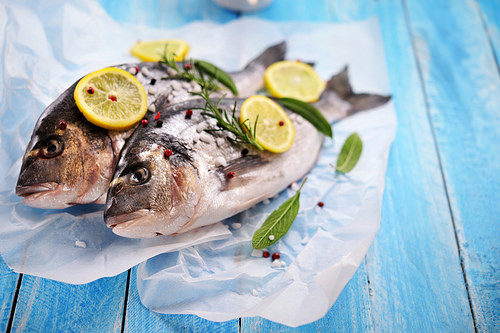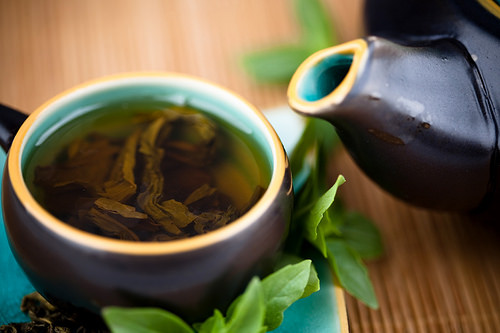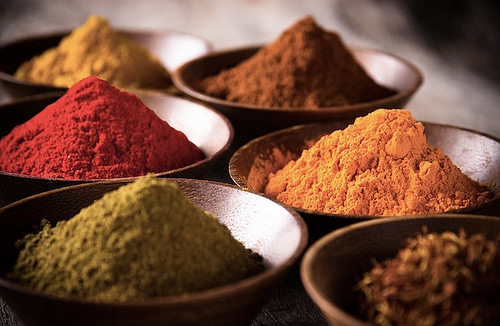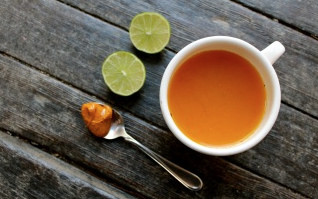Three key foods that reduce inflammation
 There are some great anti-inflammatory agents that nature has on offer.
There are some great anti-inflammatory agents that nature has on offer.
The three I discuss here are easy-to-get ingredients that can quickly be added to your daily diet.
Of course, when you are trying to reduce inflammation, there are other measures you can use alongside anti-inflammatory agents.
I’ve found it useful to cut back on sugar, alcohol and omega-6 fatty acids (which are commonly found in margarine and vegetable oils for cooking).
And I can tell you that if I could convince even some of you to add a glass of vegetable juice to your daily diet when facing inflammation, I would be the happiest nutritionist out there. 🙂
For now, though, let’s concentrate on what’s so special about three particular anti-inflammatory agents.
Omega-3 fatty acids
 Research has shown that a diet with a high percentage of omega-3 fatty acids and a low percentage of omega-6 fatty acids is linked with decreased inflammation, and much more besides!
Research has shown that a diet with a high percentage of omega-3 fatty acids and a low percentage of omega-6 fatty acids is linked with decreased inflammation, and much more besides!
Polyunsaturated fatty acids (omega-6 and omega-3 fatty acids) are the precursors of the lipid mediators and play an important role in regulation of inflammation. Generally, omega-6 fatty acids (e.g. arachidonic acid) promote inflammation whereas omega-3 fatty acids (e.g. eicosapentaenoic acid and docosahexaenoic acid) have anti-inflammatory properties.
Omega-3 fatty acids dampen inflammation through multiple pathways.
References: See these studies: 0, 1.
It has been suggested that humans evolved on a diet that had roughly a 1:1 ratio of omega-6 to omega-3 fatty acids, whereas today this ratio is approximately 10:1 to around 25:1. In other words, Western diets are deficient in omega-3 fatty acids compared with the diet on which humans’ genetic patterns were established.
On top of providing anti-inflammatory benefits, diets rich in omega-3 fatty acids have been shown to significantly reduce the risk of sudden death caused by cardiac arrhythmias and mortality in patients with known coronary heart disease.
So where can you find these health-giving fats? The answer is in all seafood, including fatty fish such as salmon and tuna, and fish oil, as well as in green leafy vegetables and sea vegetables. Flaxseed and walnuts also are good dietary sources of omega-3 fatty acids.
Green tea
 This mild beverage has many health benefits. It is made from unfermented leaves and reportedly contains the highest-known concentration of powerful antioxidants known as polyphenols. Antioxidants are substances that fight free radicals – harmful compounds in the body that damage DNA and even cause cell death. Many scientists believe that free radicals contribute to the ageing process as well as the development of a number of health problems, including cancer and heart disease.
This mild beverage has many health benefits. It is made from unfermented leaves and reportedly contains the highest-known concentration of powerful antioxidants known as polyphenols. Antioxidants are substances that fight free radicals – harmful compounds in the body that damage DNA and even cause cell death. Many scientists believe that free radicals contribute to the ageing process as well as the development of a number of health problems, including cancer and heart disease.
Antioxidants such as polyphenols in green tea can neutralise free radicals and may reduce or even help prevent some of the damage they cause. Green tea also contains alkaloids such as caffeine, theobromine and theophylline, which provide the drink’s stimulant effects, while L-theanine, an amino-acid compound found in this tea, has been studied for its calming effects on the nervous system.
In terms of tackling inflammation, the bonus is that green tea is also rich in flavonoids, which have natural anti-inflammatory properties.
References: See these studies: 2, 3.
Turmeric
 Turmeric and other spices such as garlic, cinnamon, ginger and chilli peppers also have potent inflammation-reducing capabilities. Turmeric has long been recognised for its healing powers by physicians and healers in the holistic community. However, Western medical professionals are only just starting to appreciate turmeric’s charms.
Turmeric and other spices such as garlic, cinnamon, ginger and chilli peppers also have potent inflammation-reducing capabilities. Turmeric has long been recognised for its healing powers by physicians and healers in the holistic community. However, Western medical professionals are only just starting to appreciate turmeric’s charms.
Curcumin is the active substance in turmeric that reduces inflammation. It appears to help prevent Alzheimer’s disease, and has also been shown to reduce the chronic pain endured by those with arthritis, including rheumatoid arthritis.
References: See these studies: 4, 5.
You’ve probably never thought of trying a turmeric tea, have you? I hadn’t, until I visited my naturopath and she gave me not only turmeric tea but also a turmeric smoothie. I forgot to collect the recipe for the smoothie, but I did get the one for the tea, which is handy for when you run out of ideas for dishes that you can add turmeric to.
Here it is, but feel free to experiment with the ingredients and flavourings until you find a combination that suits your taste:
- Bring 4 cups of water to the boil.
- Add 1 teaspoon of ground turmeric and ground ginger, and simmer for 10 minutes.
- Strain the tea through a fine sieve into a cup, and add honey and/or lemon to taste.
Enjoy it!

Anti-inflammatory Turmeric Tea

